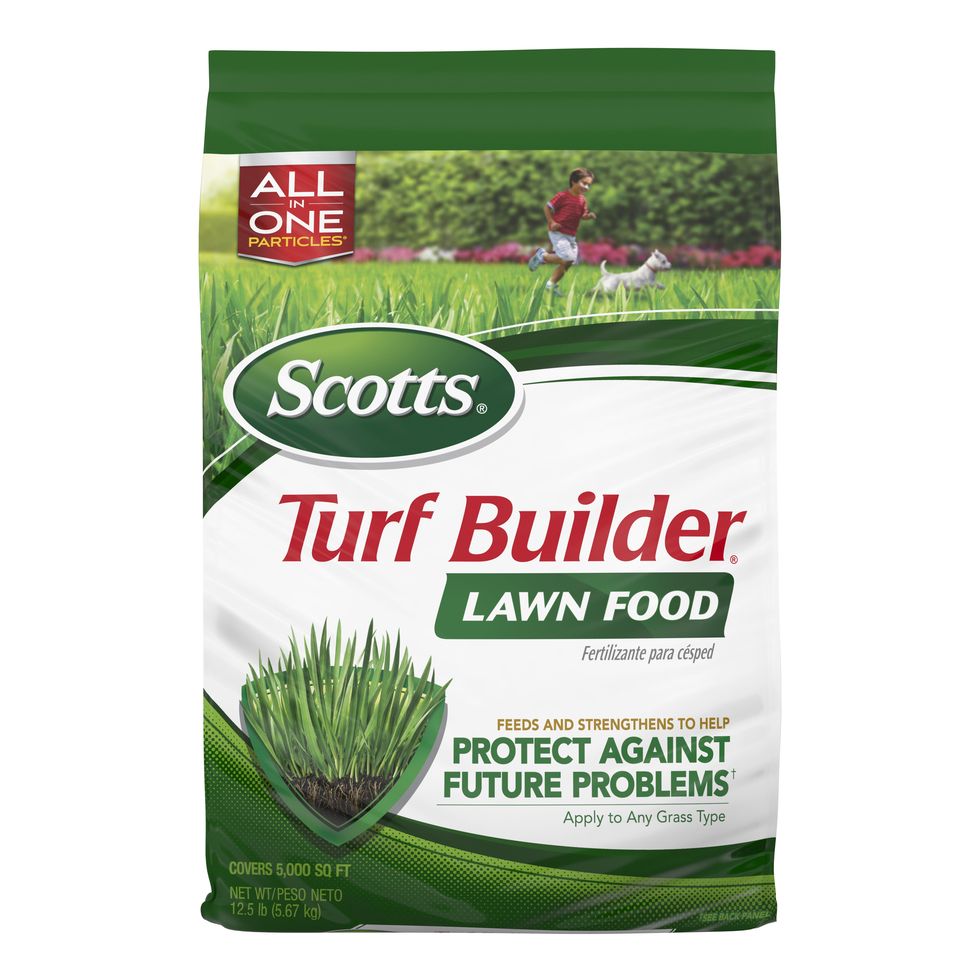Just as a quality haircut can elevate your whole look, a well-kept lawn can take a home from mediocre to magazine-worthy! But just how exactly can you maintain a lawn full of lush, green grass? Starting with the basics, you'll want to figure out when the best time to water your lawn is. Then comes the pruning and primping! But unlike your hair, there is a right time to cut your grass.
If you don't know how to start your lawn mowing journey, don't worry because the experts have got your back(yard). Ahead, you'll find everything you need to know about the best time to mow your lawn, the worst time to mow your lawn, and even more tips for maintaining a lush yard from Dani North, a lawn expert at West Coast Turf.
What is the best time of year to mow your lawn?
Before you learn the best time of day to mow your lawn, you may be wondering if there's a specific time of year that lends itself to lawn mowing. "It's completely up to preference: lawns can be mowed as frequently as needed to keep a certain look, or as infrequently as needed, depending on the type of grass," says North. "While there's a handful of grasses, like buffalo grass, Korean grass, some fescue grasses, and bent grasses, that can be left unmowed, outside of that, most grasses stay and look healthier when they're kept mowed at their preferred mowing heights."
As far as plant hardiness zones go, the cooler, upper part of the U.S., from Northern California across the map to New Jersey, requires cool season grasses such as tall fescue (which prefers to be between two and three inches) and Kentucky Bluegrass (two and a half to three and a half inches), North explains.
The warmer, lower part of the country, including states from Southern Arizona to the southern part of North Carolina, needs warm-season grasses, like Bermuda (which prefers grass between a quarter of an inch to three-quarters of an inch) and St. Augustine grasses (two and a half to four inches).
What is the best time of day to mow your lawn?
On the other hand, there is a best time of day to mow your lawn. North asserts that the ideal mowing window is between 8 a.m. and 10 a.m., after the best time to water your lawn, which is between 5 a.m. and 8 a.m. "That's going to allow the plant to absorb the water for the day before the heat of the day comes. We want to be able to mow once those leaves have dried because we don't want to mow when the leaves are damp or wet," she says. "This can cause the grass blades to slip and create an unclean cut, or no cut at all."
Unfortunately, lawns don't take into account the 9-5 workday, which may prevent people from getting that early morning mowing in. In that case, North says the second best time to mow your lawn is between 4 p.m. and 6 p.m.
What is the worst time of day to mow your lawn?
If you haven't already put two and two together, the first and second prime mowing times fall at the beginning and end of the day. "We're avoiding the heat of the day when temps are the highest; this can lead to stress and burning," North explains.
"Leaves have pores like we do, and those pores are wide open during the middle of the day: plants are sweating, there's air exchange happening, there's evapotranspiration happening, there's moisture and air leaving the plant," she says. "When you water in the middle of the day, during that hottest part of the day, not only is it stressful, but you're also wasting water because it's just going to be sweated right out of the plant, so most of it is not going to be absorbed."
But it's not just the heat you have to look out for. Homeowners should also avoid mowing in the evening or at night. "Open cuts during dark and damp weather can leave the plant vulnerable to attack or disease," says North.
What are some tips for mowing a lawn?
One major tip that will make mowing your lawn easier is planting the right type of grass. North, who lives in Southern California, has a lawn consisting of Bermuda grass. "It's the most drought tolerant and most durable of all the warm season grasses. I mow my lawn every two weeks, and that's to allow it to reach about an inch before I mow it again," says North. "During spring and fall, I'll be able to water less and mow even less because it's not during its prime peak of growing as much." In contrast, cool season grasses, such as tall fescue grass, are drought tolerant but still require a lot of water.
Of course, finding the best type of grass for your lawn is dependent on where you live. To take the trial and error out of finding the right grass, North recommends using TheRealCaliforniaLawn.com to find local growers of grass varieties that will work for you.

Nitya Rao is the editorial assistant at The Pioneer Woman, covering stories ranging from food, fashion, beauty, lifestyle, news, and more.

















